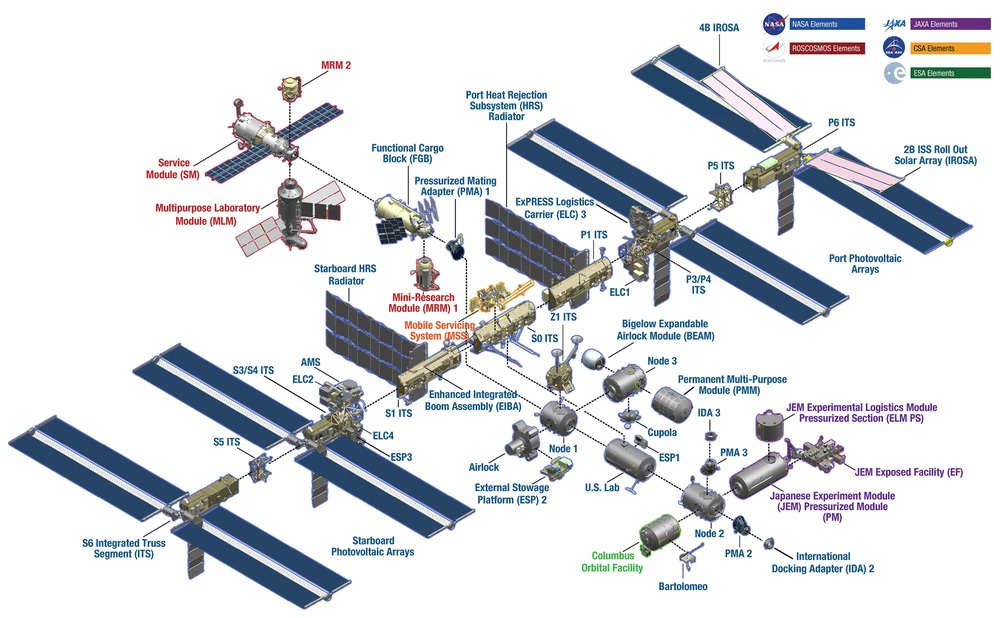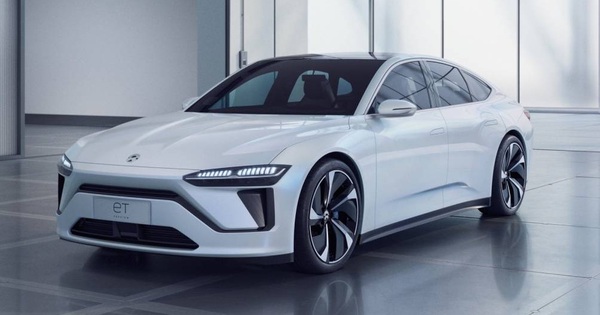first. ISS: Consensus of 15 countries
International Space Station (ISS) is the result of unprecedented scientific and technical cooperation between 5 agencies The universe representing 15 countries including NASA of the US, Roscosmos of Russia, the Canadian Space Agency (CSA), the Japan Aerospace Exploration Agency (JAXA) and the European Space Agency (ESA), including including 11 countries.
2. Dimensions of the ISS . Space Playground
The size of the ISS is four times larger than Russia’s Mir space station and five times larger than the previously built US Skylab.
• Width including wingspan of the solar array: 109 meters, wider than the world’s largest passenger aircraft, the Airbus A380 (80 meters).
• Length: 79.9m.
• Weight: 456.62 tons
• Habitable volume: 388 m3, excluding sightseeing facilities. Eight spacecraft can connect to the station at the same time.
• Power generation: 8 solar arrays provide 75 to 90 KW of electricity
• The living and working spaces in the station include six bedrooms, two bathrooms, a gym and bay windows with 360-degree views.
3. The process of “nesting”
The ISS is made up of 16 pressurized modules: 6 Russian modules (Zarya, Pirs, Zvezda, Poisk, Rassvet and Nauka), 8 American modules (BEAM, Leonardo, Harmony, Quest, Tranquility, Unity) , Cupola and Destiny), 2 Japanese modules (JEM-ELM-PS and JEM-PM) and 1 European module (Columbus).
In total, more than 30 tasks were performed to assemble the modules, complete repairs and stockpile supplies for the station.

Parts of the ISS (source: NASA)
December 4, 1998: The Unity Node 1 module – the first US-built component is launched into orbit on the STS-88 mission. Unity’s connection to the Zarya module is the first step in assembling the orbital lab.
November 2, 2000: The first crew of 3 astronauts who resided on the station during the mission called Expedition 1 was lifted up by the Russian spacecraft Soyuz TM-31. They spent four months aboard the ship completing the necessary missions.
February 7, 2001: Destiny, the American Laboratory module, becomes part of the station. The laboratory has increased the living space on board by 41%, continuing to be the main US payload research laboratory.
February 7, 2008: The European Space Agency’s Columbus Laboratory becomes part of the station.
March 11, 2008: Japan’s first Kibo laboratory module becomes part of the station.
Construction of the ISS was completed in May 2009, after which it was fully operational, just in time to celebrate the 10th anniversary of the human “stationary” on the space station.
4. Construction and operating costs
The ISS has cost $160 billion so far, of which the US has spent most of it – nearly $100 billion including the space shuttle program. Russia, Europe, Canada and Japan spend the rest. It is said to be the most expensive object ever built. The station currently costs NASA about $3 billion a year.
5. ISS stopover
In September 2021, Russia warned that at least 80% of its systems on the ISS were out of service. Cracks have begun to appear in the Zarya cargo module. There was also a series of air leaks in the crew living quarters. Therefore, NASA has announced that the ISS will end its mission in 2031.
The ISS will join a series of retired space hardware that ends in the Pacific Ocean. It will be brought down to a place called Point Nemo, which is located between New Zealand and South America, 2,688 km from the nearest land. So falling debris poses little danger to humans.
The process of building the ISS
at Blogtuan.info – Source: Soha.vn – Read the original article here

